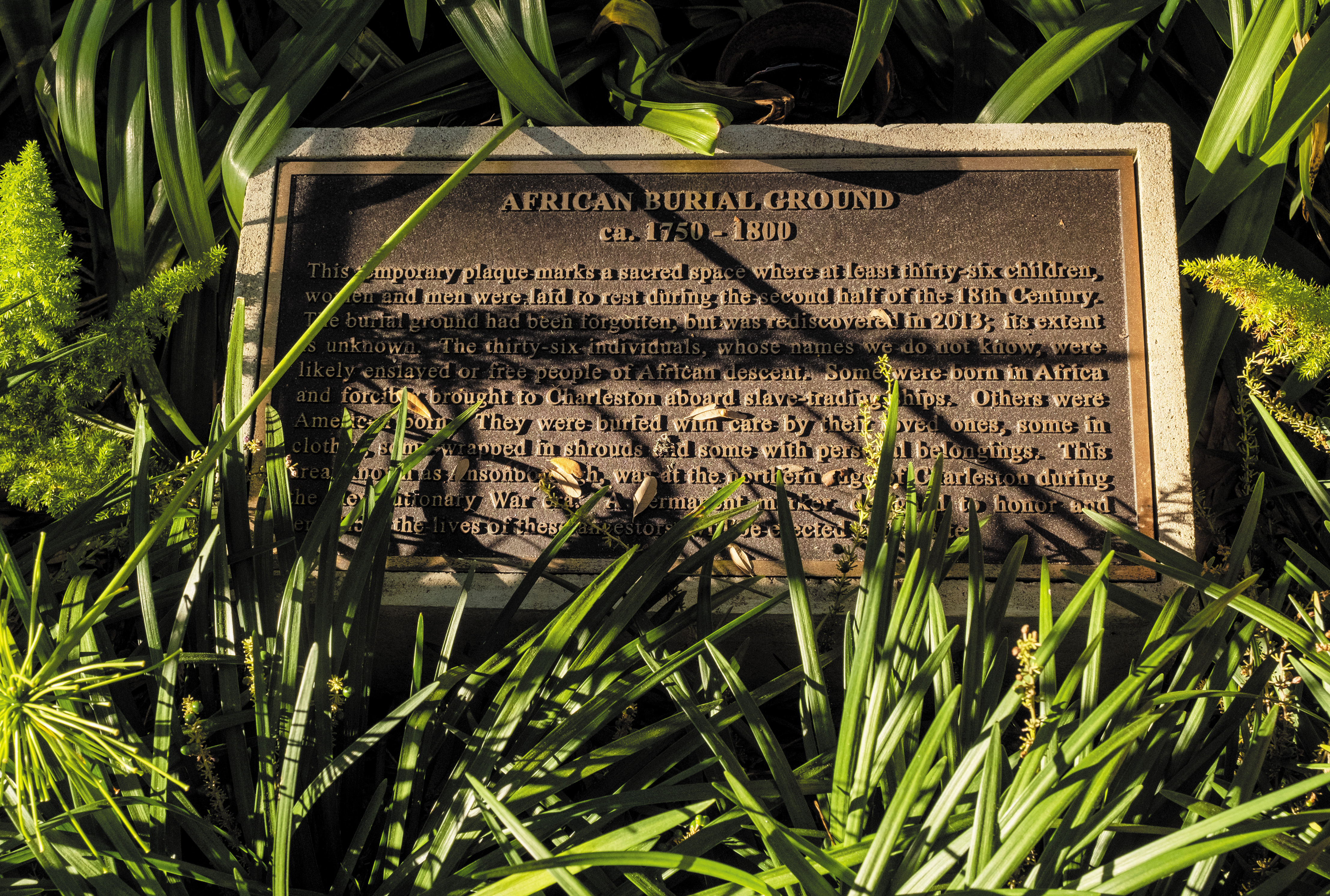A New Project Uses Isotopes to Pinpoint the Birthplaces of the Enslaved [View all]
JANUARY/FEBRUARY 2024
In South Carolina, members of the local Black community are teaming up with scientists to produce a novel study of the trans-Atlantic slave trade

Sunlight illuminates a plaque in Charleston, South Carolina, honoring 36 likely enslaved people—ranging in age from 3 to over 50—whose remains were discovered in 2013.
Gavin McIntyre
By Maddie Bender and Teddy Brokaw
Photographs by Gavin McIntyre
While digging a trench for the renovation of a local performing arts center in 2013, construction workers in Charleston, South Carolina, made a startling discovery: human bones. The crew called the police and coroner’s office, unaware they had stumbled upon a late-18th-century burial ground. The site’s location—along with the coins, ceramics and beads that had been buried with the bodies—suggested that the people had been enslaved Africans.
For years after the initial discovery, scientists and community leaders worked to identify the people who had occupied the graves. The city enlisted Ade Ofunniyin, known as “Dr. O,” to helm these efforts. A cultural anthropologist, nonprofit director and grandson of a famed Charleston blacksmith, Ofunniyin ensured that the 36 individuals—who would come to be known as “the Ancestors”—had a modern-day champion. He sought to learn the Ancestors’ histories and honor their identities. He successfully lobbied the city to reinter the Ancestors. And in response to a high school student’s question—did the Ancestors have names?—Ofunniyin presided over a traditional Yoruba naming ceremony in 2019.
After Ofunniyin died unexpectedly in 2020, a group called the Anson Street African Burial Ground project took up the mantle. “He put together a beautiful team of people,” says La’Sheia Oubré, the group’s community education lead, “and he left us to continue the work.” That work included seeking permission from Charleston’s African American community to extract DNA samples from the remains of the Ancestors. With the community’s consent, the samples were analyzed, and the results shed some light on where the Ancestors had originated. Many hailed from West-Central Africa, West Africa or sub-Saharan Africa. One Ancestor was found to have mixed West African and Native American heritage.
But DNA can only tell you so much. “I was just getting so sick of the interpretation being, ‘We have an African individual, and our interpretation is this person is from sub-Saharan Africa,’” says Vicky Oelze, an anthropologist at the University of California, Santa Cruz who studies the archaeology of the trans-Atlantic slave trade. Being able to pinpoint where exactly a person is from, she says, “has implications for their culture, their language, their beliefs, their practices—which contributed to so much of the culture of the Americas and the African diaspora at large.”
More:
https://www.smithsonianmag.com/science-nature/new-project-uses-isotopes-pinpoint-birthplaces-enslaved-180983459/
